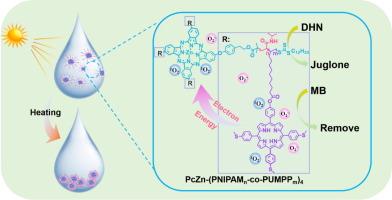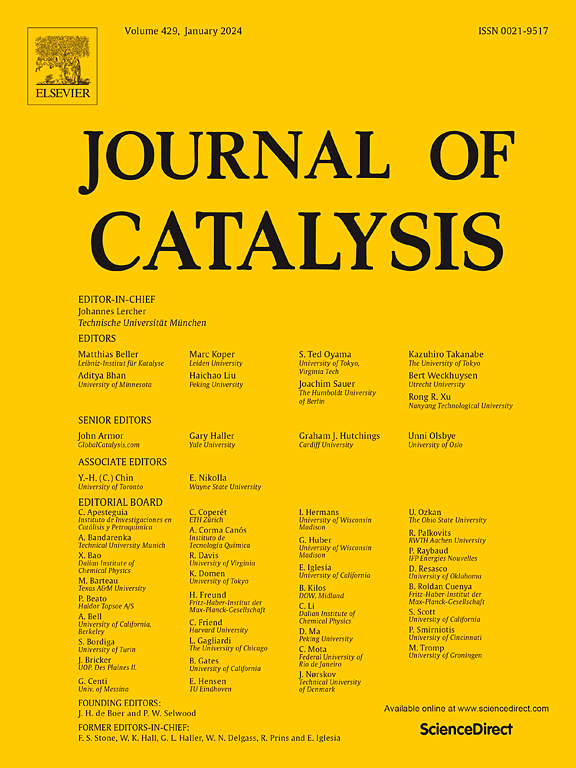Thermosensitive four-arm star-shaped copolymers with phthalocyanine as core and porphyrin copolymer as arms was used as visible light photocatalyst
IF 6.5
1区 化学
Q2 CHEMISTRY, PHYSICAL
引用次数: 0
Abstract
Porphyrins and phthalocyanines are considered as visible light catalysts with great development potential due to their unique π-conjugated structure, strong visible light absorption and structural tunability. However, they are easy to aggregate and difficult to dissolve, and their application in the field of photocatalysis is limited. Based on the above problems, in this study, three four-arms star-shaped thermosensitive copolymers (PcZn-(PNIPAMn-co-PUMPPm)4) photocatalysts with zinc phthalocyanine as the core and porphyrin thermosensitive copolymer as the arms was constructed by using RAFT polymerization technology and the ’core first’ route. The visible light catalytic activity of the prepared star-shaped copolymers was evaluated by using 1,5-dihydroxynaphthalene (DHN) and methylene blue (MB) as model pollutants. The three copolymers were found to be effective in oxidizing DHN to juglone and degrading MB. Among them, PcZn-(PNIPAM33.5-co-PUMPP1.6)4 (P3) showed the highest DHN conversion efficiency (100.0 %), reaction yield (70.0 %) and MB degradation (96.9 %). 1O2 and O2·- are the main active substances in the visible photocatalytic process. Based on UV–vis absorption spectra, Fluorescence spectra, EIS Nyquist plots and transient photocurrents, it is confirmed that P3 has a wider range of visible light absorption, and there is effective energy and electron transfer between TTPcZn and UMPP units in P3, which makes it have higher catalytic activity. More importantly, the lower critical solution temperature (32.6 ∼ 32.9 °C) of P3 makes it possible to achieve homogeneous catalysis and heterogeneous recovery through simple temperature regulation in the catalytic process, which makes P3 have good reusability. This work paves a way for the construction of high-performance and recyclable visible polymer photocatalyst.


求助全文
约1分钟内获得全文
求助全文
来源期刊

Journal of Catalysis
工程技术-工程:化工
CiteScore
12.30
自引率
5.50%
发文量
447
审稿时长
31 days
期刊介绍:
The Journal of Catalysis publishes scholarly articles on both heterogeneous and homogeneous catalysis, covering a wide range of chemical transformations. These include various types of catalysis, such as those mediated by photons, plasmons, and electrons. The focus of the studies is to understand the relationship between catalytic function and the underlying chemical properties of surfaces and metal complexes.
The articles in the journal offer innovative concepts and explore the synthesis and kinetics of inorganic solids and homogeneous complexes. Furthermore, they discuss spectroscopic techniques for characterizing catalysts, investigate the interaction of probes and reacting species with catalysts, and employ theoretical methods.
The research presented in the journal should have direct relevance to the field of catalytic processes, addressing either fundamental aspects or applications of catalysis.
 求助内容:
求助内容: 应助结果提醒方式:
应助结果提醒方式:


